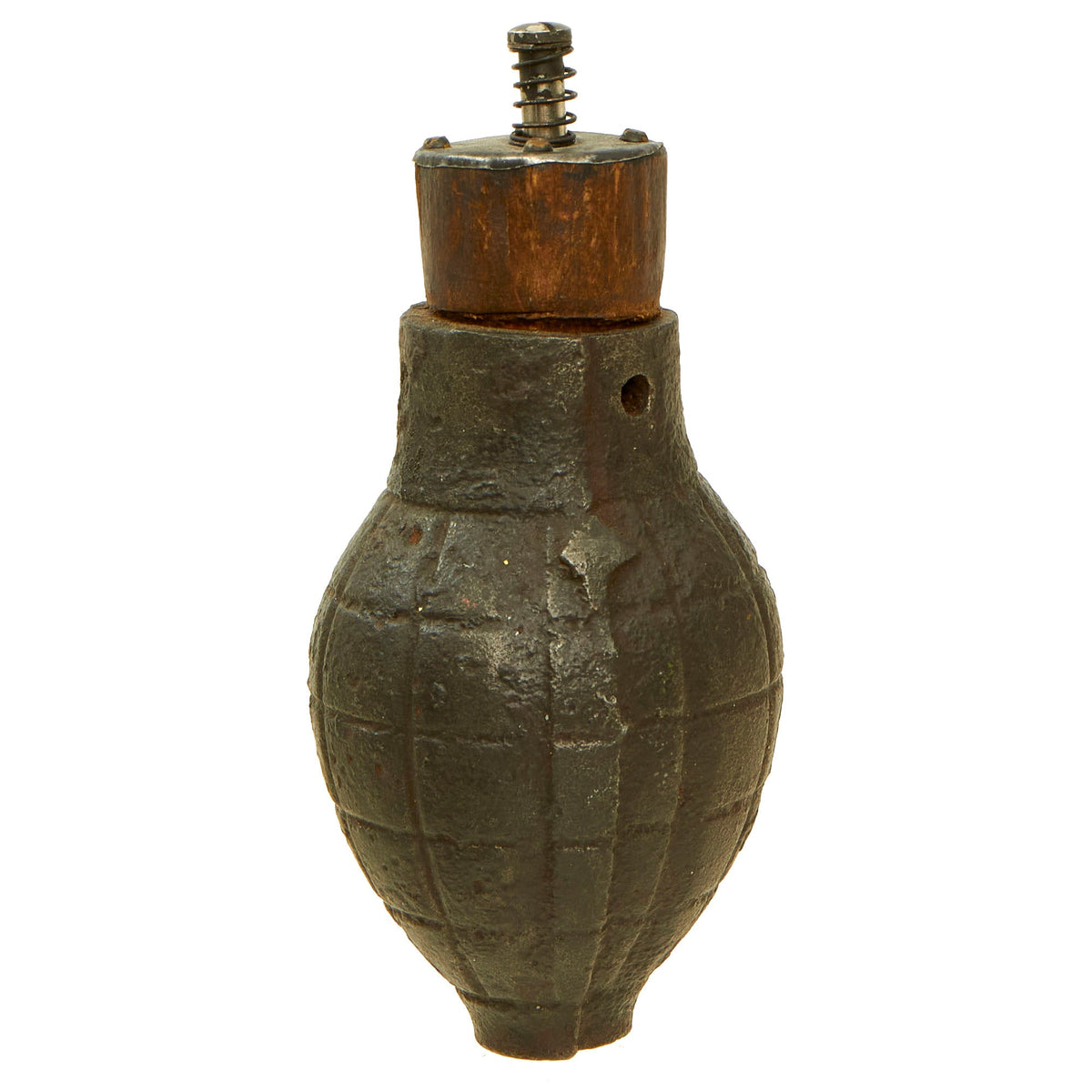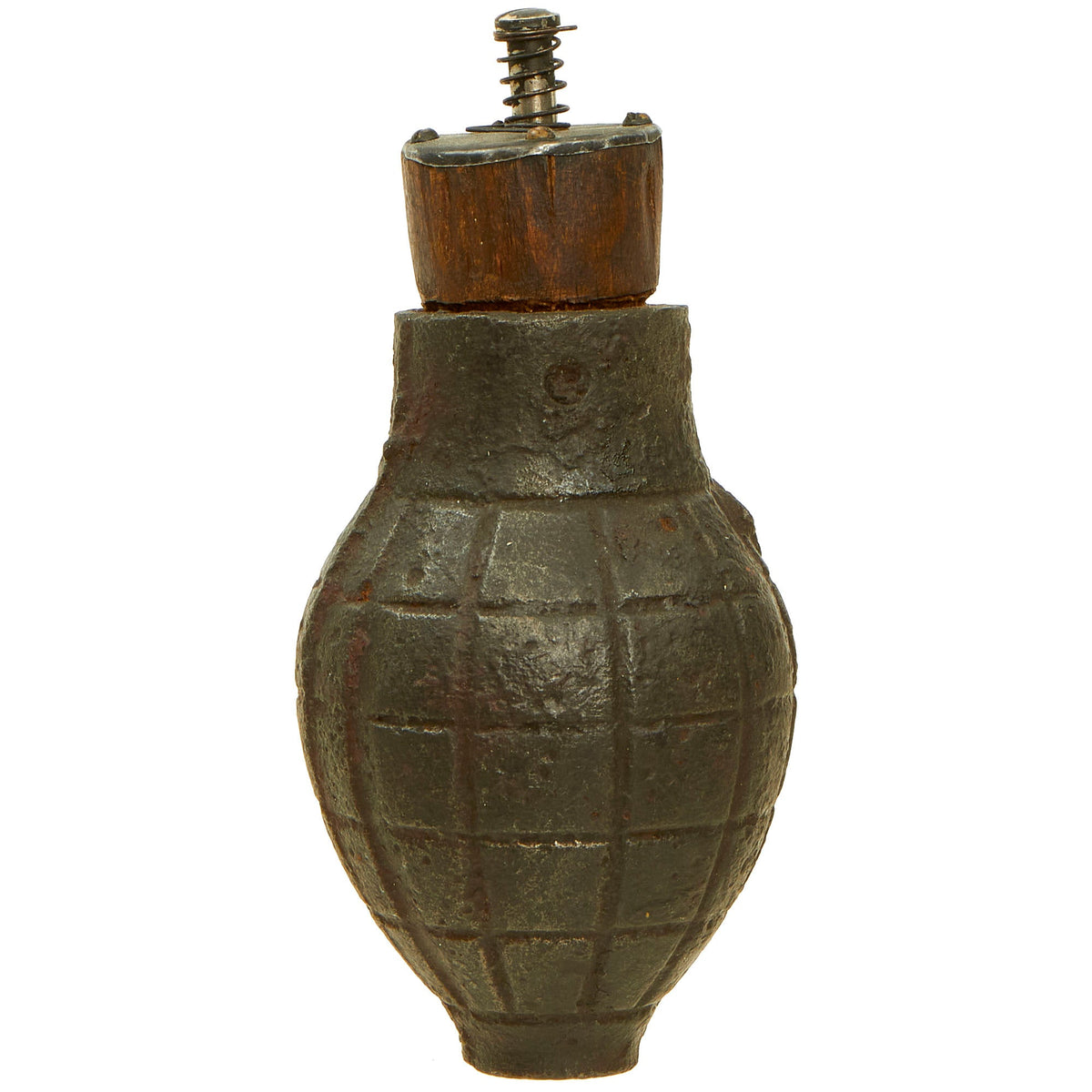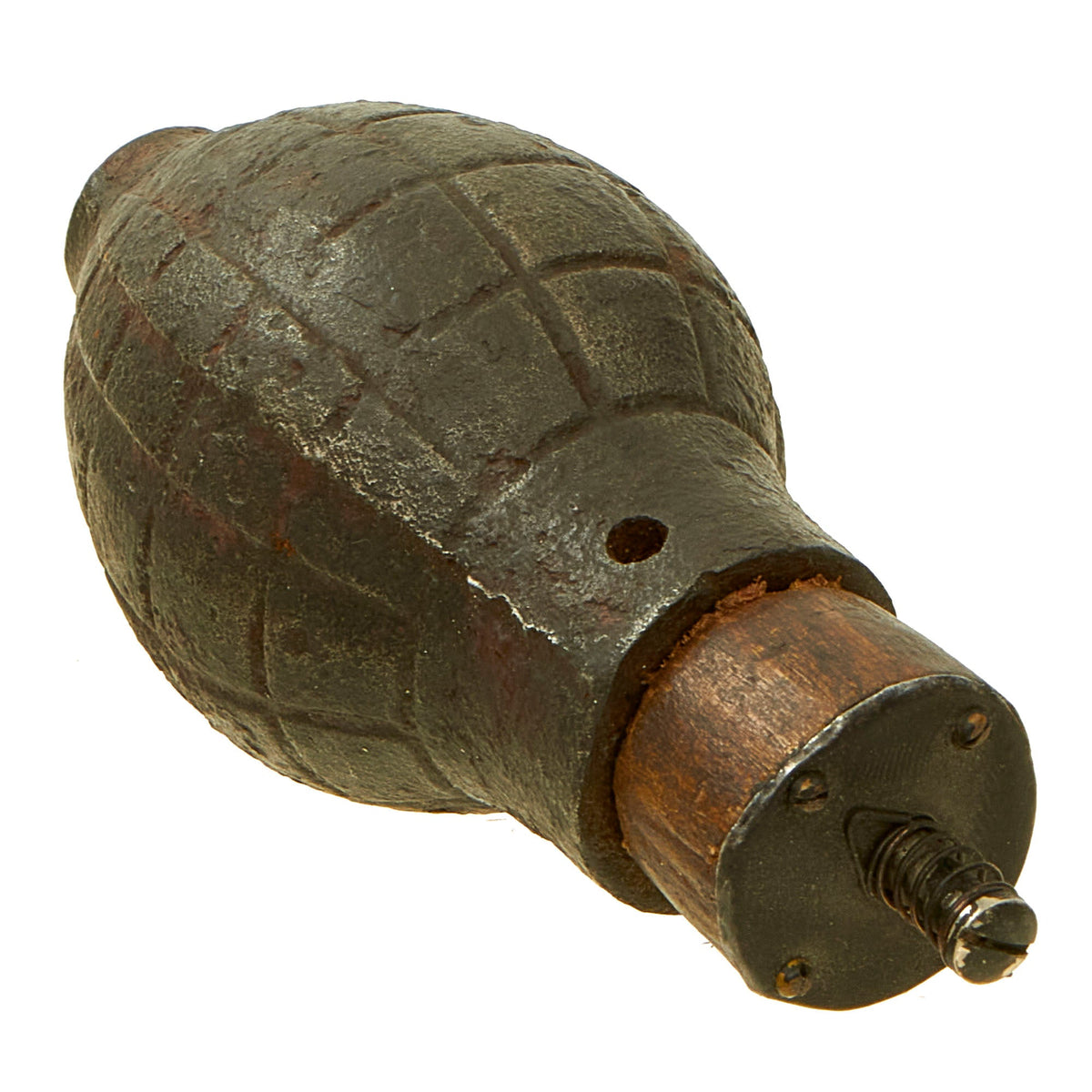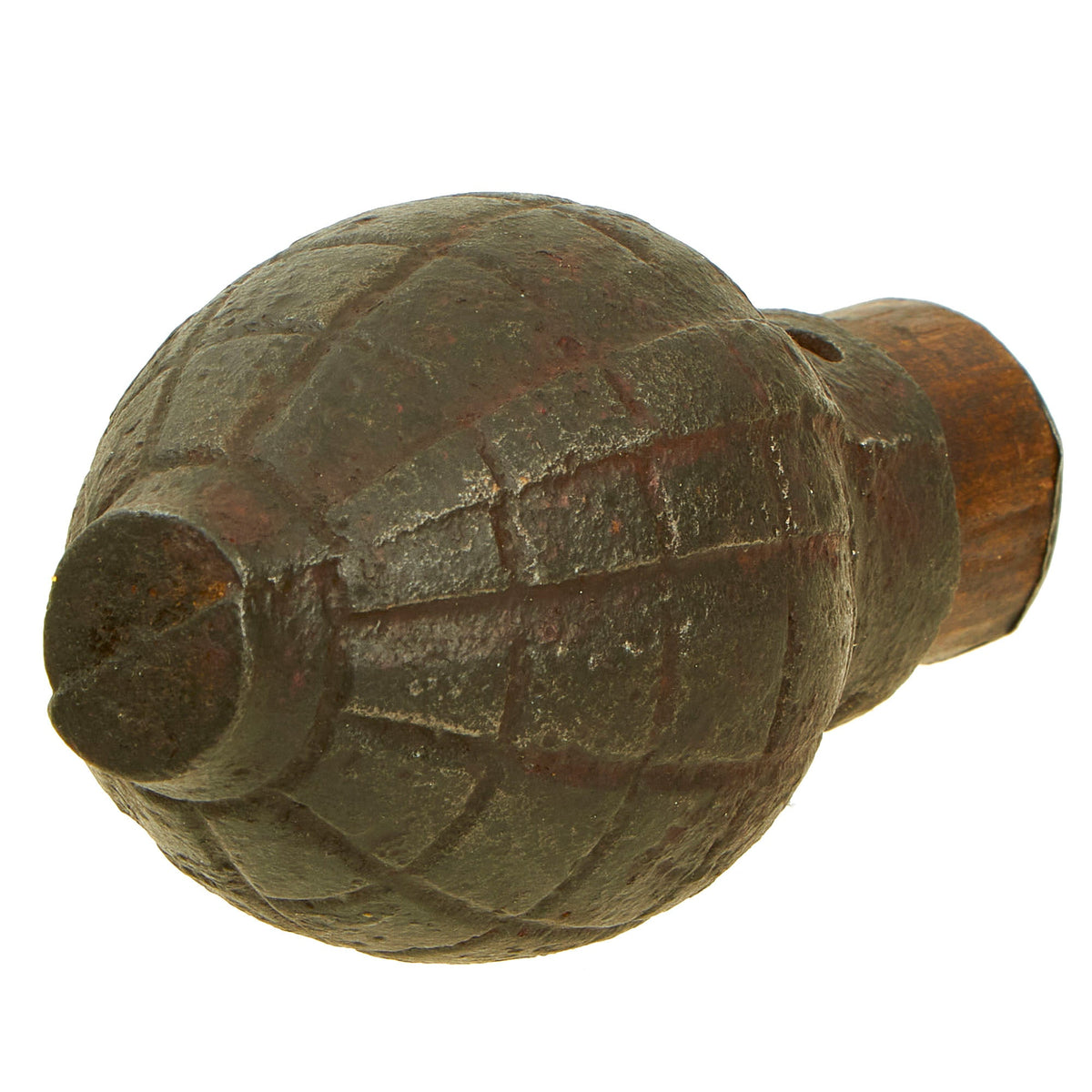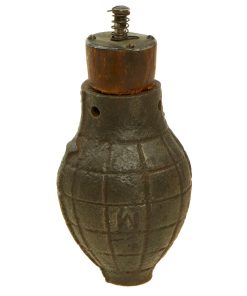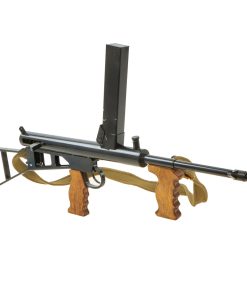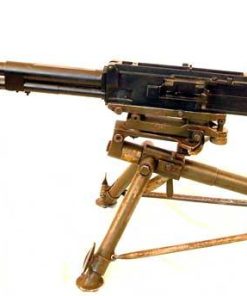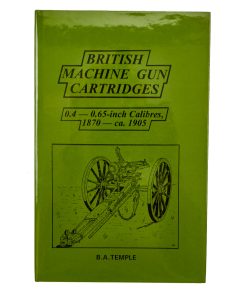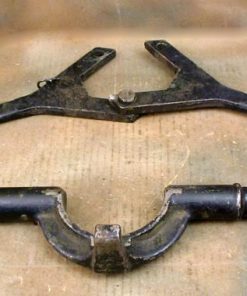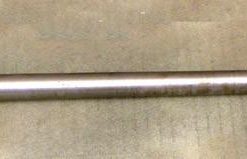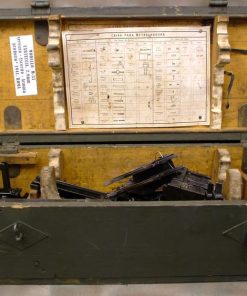Original French WWI Foug M1916 Inert Lemon Grenade with Wood Top Plug – Citron modèle 1916 Original Items
$ 395,00 $ 118,50
Original Item: Only One Available. This is a totally inert BATF compliant genuine World War One French Foug Mle 1916 “Citron” (Lemon) grenade in good condition. Unfortunately, it no longer has the galvanized steel fuze cover or impact fuze, but it does still have the wooden top plug where the fuze was held. The covers were especially easy to lose, and often pressed into service elsewhere.
The grenade is in very good condition, having just some light surface rust on the body, with the fragmentation shape still quite evident. The wooden plug has fared a bit worse, and is now cracked from age but still complete.
These were made in large numbers, but very few survived until this day, due to the relative danger the design posed. Most that were not used in combat were destroyed, so finding them in any condition is quite rare. Ready to display!
Not Available For Export
World War I was a time of rapid development of explosive technologies, as well as a very large demand. Beginning around April of 1915, early in the conflict, French arms manufacturer Foug, in Meurthe et Moselle near Toul, began to produce simple grenade models for use in the war. These included copies of the famous German stick grenade, and two ‘asparagus’ grenades, a long and a short version, with pre-fragmented bodies and rudimentary wooden percussion ignition fuzes.
The Foug modèle 1916 citron grenade is an evolution of the ‘asparagus’ grenade design, mainly designed to reduce the weight and improve the fragmentation properties. The shape of the body was modified, as it had been found that the shape was more important than the grooves on the outside when related to proper fragmentation.
The ignition system on all of these grenades was rudimentary, with a percussion block moving inside a wooden plug equipped with a primer, and linked to a detonator. With no other safety device than a simple spring, the grenade was actually quite dangerous to handle. To prevent accidental detonation, relatively heavy fuse cap was installed.
The ‘citron’ (lemon) nickname was a common one for grenades, as the profile was easy to handle and exploded well. Despite the dangers involved with the ease detonation, this type of grenade was manufactured in large numbers. This was due more to ease of manufacturing than to any particular increase in effectiveness. The war effort needed grenades, and simple grenades such as this were easy to mass produce. Additionally, the grenade was sometimes mounted on a wooden block, and launched with a ‘fusil Guidetti de 65mm’.
Fast Shipping with Professional Packaging
Thanks to our longstanding association with UPS FedEx DHL, and other major international carriers, we are able to provide a range of shipping options. Our warehouse staff is expertly trained and will wrap your products according to our exact and precise specifications. Prior to shipping, your goods will be thoroughly examined and securely secured. We ship to thousands clients each day across multiple countries. This shows how we're dedicated to be the largest retailer on the internet. Warehouses and distribution centres can be located throughout Europe as well as the USA.
Note: Orders with more than one item will be assigned a processing date depending on the item.
Before shipping before shipping, we'll conduct a thorough inspection of the items you have ordered. Today, the majority of orders will be delivered within 48 hours. The delivery time will be between 3-7 days.
Returns
The stock is dynamic and we cannot completely manage it because multiple stakeholders are involved, including our factory and warehouse. So the actual stock may alter at any time. It's possible that you may not receive your order once the order has been made.
Our policy is valid for a period of 30 days. If you don't receive the product within 30 days, we are not able to issue a refund or an exchange.
You can only return an item if it is unused and in the same state as the day you received it. You must have the item in its original packaging.
Related products
Uncategorized
Uncategorized
Australian WWII Owen MK1 Machine Carbine SMG Custom Fabricated Replica with Sling Original Items
Uncategorized
Uncategorized
Uncategorized
Band of Brothers ORIGINAL GERMAN WWII Le. F.H. 18 10.5cm ARTILLERY PIECE Original Items
Uncategorized
Uncategorized
Uncategorized
Uncategorized
Uncategorized
Australian WWII Owen MK1 Machine Carbine SMG Custom Fabricated Replica with Sling Original Items
Uncategorized
Uncategorized
Uncategorized
Uncategorized

